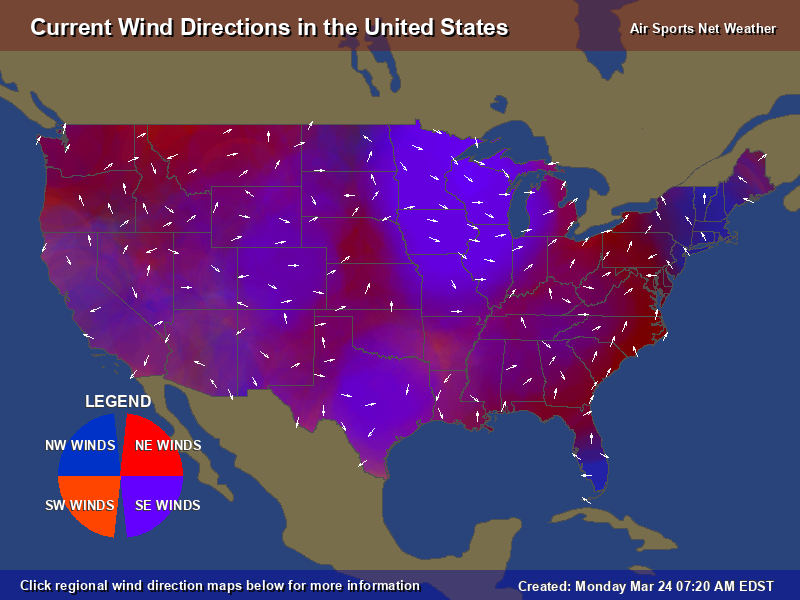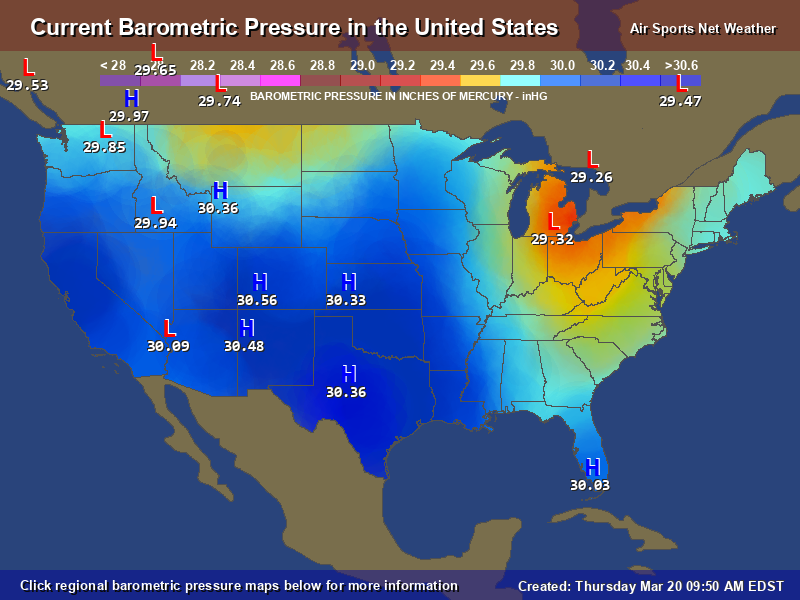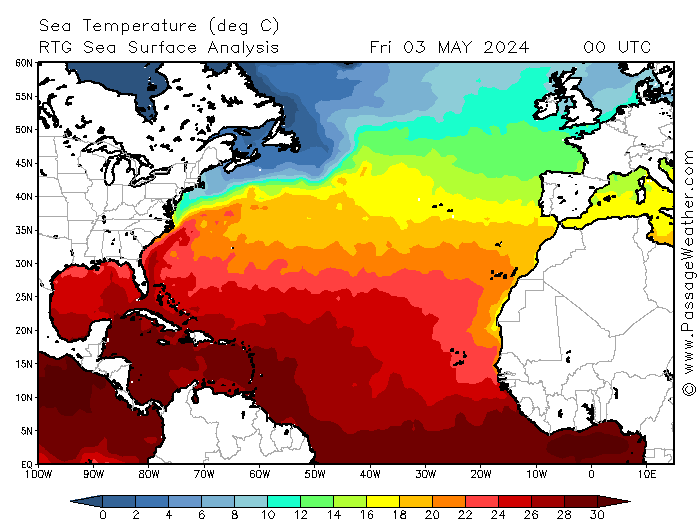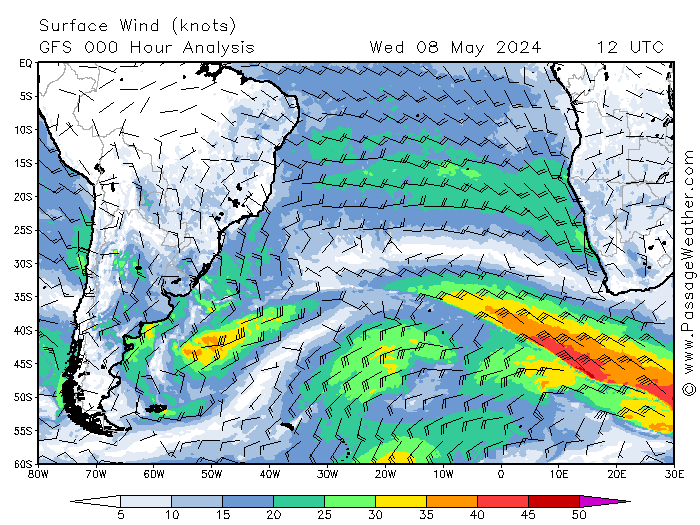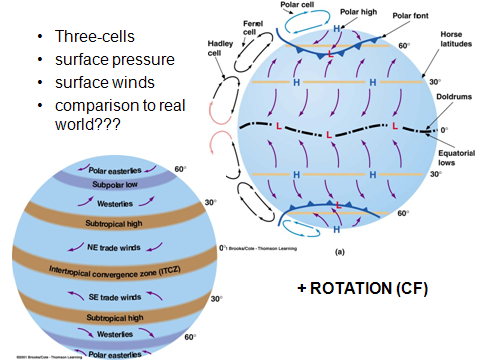Regarding winds and the movement of air masses, the Earth can be divided into three general areas: the polar regions, the temperate zones, and the equatorial regions.
For an example of airflow transitioning from the equatorial zone (west-bound) to the temperate zone (east-bound), see the chart at right.
Air pressure is shown in millibars or inches. The average (standard) air pressure at sea level is 1013 millibars (mb), or 29.92 inches.
Any area with a lower value is an area of low pressure. Any area with a higher value is an area of high pressure. The further the pressure is from 1013, the greater the speed of the associated winds.
Weather charts will often label an area as a low, even if it is above 1013 but it is surrounded by higher air pressures, particularly if the winds are circulating counter-clockwise (in the northern hemisphere).
High pressure tends to bring sunny weather.
Low pressure tends to bring clouds and precipitation (rain, sleet, or snow, depending on the temperature).
Air pressure declines as the altitude rises above sea level, which means you get less oxygen with each breath. At 11,000 feet, the air pressure is only two-thirds (670 mb), which means you are only getting two-thirds as much oxygen in each breath as normal. At 18,000 feet, the air pressure is only half (506 mb). These are standard values; the actual air pressures will vary, as they do at ground level.
Peoples' tolerance for getting less oxygen varies; some people can go no higher than 5,000 feet (843 mb); others can go as high as 14,000 feet (595 mb) with no problem. The bodies of people who live at high altitudes adapt, and those people can go higher. Vision can also be affected by high altitude, particularly at night.
The lowest pressure ever recorded (at sea level) was 867.93 millibars, in the eye of typhoon Tip over the Pacific Ocean on 12 October 1979.
The highest air pressure ever recorded was 1085.68 millibars at Tosontsengel, Mongolia, on 19 December 2001.
 Your Weather Center
Your Weather Center
